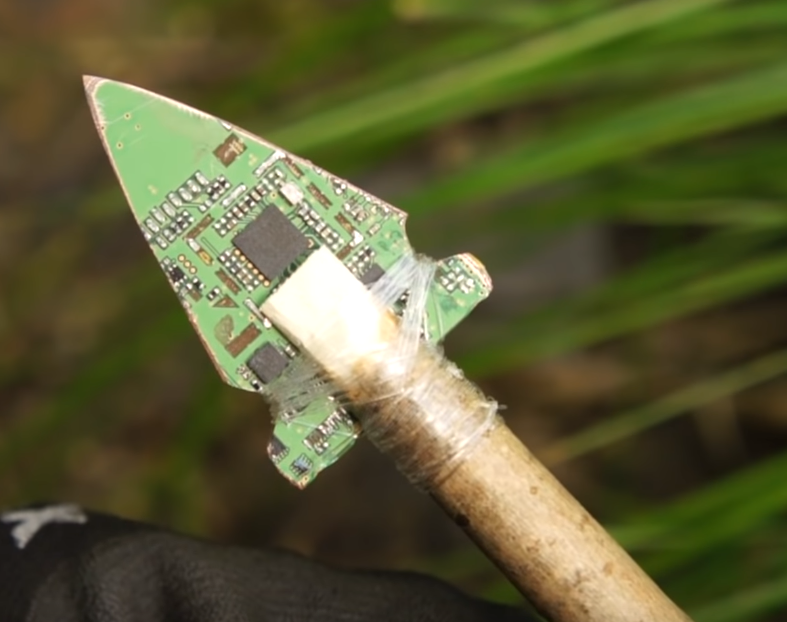Just switched from Plex… but might be going back lol. Http:/localhost :8097 works on my PC where my JF server is hosted. But I can’t connect on any other devices on the same network. What I have tried:
-
enabled private connections in Windows Defender. Then tried public too.
-
went to settings and binded address to 0.0.0.0
-
changed my port from 8096 to 8097 just to see if a different port would work.
-
Made an inbound rule for port 8097 in advanced firewall settings.
Not sure what’s going on here. On Plex it was easy to discover other devices on the same network. I have JF localhost connected to my Cloudflare Tunnel and I have access on all of my devices that way… but I rather just use my internal ip when I’m at home. Any help?
UPDATE: Literally been at this for hours, and as soon as I post the question on Lemmy…I figured it out. 🤦🏽♂️🤦🏽♂️🤦🏽♂️🤦🏽♂️
On Windows, I had to go to settings > networks and internet > and select private network. Don’t know how it was on public. Smh. I’ll leave this here just in case anyone else has the same issue.
I always chuckle when I see someone censoring an internal IP. It’s like intentionally not naming the room you’re in (kitchen, bathroom, bedroom, etc) when you’re on the phone so the person on the other end can’t find you on a globe.
If we pull in a team effort we can all collectively try 1 to 255 for the last octet and download all the money from this man’s bank account and split it between us what say?
I’m in. We just need 253 more people
I’ll cover the gateway to make sure they don’t sneak off to another net.
Are you sure he’s using 255.255.255.0 network mask though?
Isn’t 255 the broadcast address?
We’ll mark you down as having tested 255 then, 1 down, 254 to go!
Depends on the network mask.
The 192.168.x.x IP range doesn’t allow for subnet masks greater than 255.255.255.0. How that’s enforced I can’t remember, but I’m 99% sure he isn’t using larger subnets.
The 192.168.x.x IP range doesn’t allow for subnet masks greater than 255.255.255.0
This is nonsense. In that space you get a /16, and you can do with it whatever you want.
No it’s not. 192.168.x.x is a reserved class C range which per specification is limited to 255.255.255.0
Stop sprouting that kind of bullshit.
Class based networking has been obsolete for 3 decades now - and RfC 1519 was quickly implemented, so pretty much by the mid 90s any device looking up network masks by classes could be considered some broken legacy device.
RfC 1918 - which allocates the private IP ranges - came 2.5 years after the introduction of CIDR, specifies the networks in bit notation, and only references what the equivalent networks were in class notation as reference for people who have been asleep for a few years.
The .x.x literally shows that you can fit a /16 (255.255.0.0) in there. 192.168.0.0 255.255.0.0
No, that’s a placeholder a set. It’s a class C range which is limited to 254 hosts.
New to selfhosting. Didn’t know any better 🤷🏾♂️
To be clear, my comment wasn’t meant to be mean spirited.
Y’all been coming at my neck about this ip address thing. I had to check to make sure I wasn’t back on reddit 😭
You don’t need to put in the effort to hide those IPs. An IP starting with 192.168 is a private network and virtually useless as any way to compromise your network - an outsider would need access to your network (via your modems public facing IP) and know the device access credentials to make any use of the IPs.
That being said, it appears your input devices are unable to connect because they can’t be found. That means a mismatch in network details somewhere. Check the IP address and confirm it’s using the same subject; does the device connecting use the same 192.168.1.x network as the input/source device?
No I have his ip and now I will hax!!!
Good luck! I’m behind 7 proxies!
Your proxies are nothing compared to my wall of fire.
I have water and a ladder.
You animal!
New to selfhosting. Didn’t know any better 🤷🏾♂️
Exactly my point
Gotta censor out those local IP’s
Kind of new to selfhosting. Didn’t know any better 🤷🏾♂️
I was going to comment this, that’s so cute.
I wasn’t sure of the word. Cute is very good to describe this!
No problem. One more tip though: If you ever censor your public IP, don’t just censor the last two digits. Otherwise it will be easily brute-forced.
Good to know
Any particular reason you felt you needed to blur the last octet? Lol it’s a private IP, outside your broadcast domain and NAT it’s not unique.
Pretty much every home ISP router is going to hand out IP’s on a class C zero subnet (192.168.0.0/24), if I was trying to fingerprint a network I’d start there anyways but you’d need the public IP for that to even matter.
New to selfhosting. Didn’t know any better 🤷🏾♂️
I suppose I’m being a little harsh, I just deal in networks and it made me pause but I forget not everyone knows what I know. I apologize for being rude.
Essentially your internal private network operates on three ranges of numbers depending on your specific needs. Homes usually never need more than a couple dozen but even the most advanced home network probably only uses half a dozen subnets at most and need fewer than 253 devices per, so usually you get 192.168.0.0-192.168.255.255/24 because it’s more than enough. The “/24” denotes (out of 32) where the subnet ends, essentially how we are dividing up the allotted space in the IP scheme we are given. The “Class C” range (mentioned above) has an available 65,000+ addresses. Usually more than enough for any way you want to slice it up. Mostly you’ll just see people sling /24’s around because it’s an even interval of 1 in the last octet which makes things simpler.
People who build more robust “networks” (in the commercial sense) at their houses will usually operate a few different ones, some for internal and others set aside in “DMZ” zones for outward facing servers. Such as gaming servers or self hosting jellyfin!
I read this and got all the way lost in the sauce. Is this English? Lol but for real, I appreciate the info.
No problem, networks are an interesting development in computer technology and plenty of people (even those with computer knowledge) have never seen how complex they can get.
I’m assuming both listed IPs are the same IP address? Those are internal IP addresses so you don’t need to censor them.
Also, is this the Jellyfin app? If so, what happens if you bring up either addresses through a web browser?
Back in the windows 2012 era, we knew every time a major windows update was pushed, because the same set of customers would always create a ticket, complaining about inaccessible RDP. Windows firewall is just opinionated like that.
Regarding your edit and public vs private network:
Windows really likes to do that.Tbh: As soon as I read it, I was assuming it was Windows Firewall related.
I hade the same issue recently when I tried jellyfin server on my windows PC. In my case the private/public Windows Firewall setting was not successful.
But what helped was to open the windows firewall settings and to allow jellyfin do access the privat/public network. You can access the setting by opening the “allowed apps” section in the windows firewall settings.
Maybe this helps some other folks in the future 😊
Acronyms, initialisms, abbreviations, contractions, and other phrases which expand to something larger, that I’ve seen in this thread:
Fewer Letters More Letters CF CloudFlare DNS Domain Name Service/System IP Internet Protocol NAT Network Address Translation
4 acronyms in this thread; the most compressed thread commented on today has 13 acronyms.
[Thread #144 for this sub, first seen 17th Sep 2023, 17:45] [FAQ] [Full list] [Contact] [Source code]
Great Bot!
Try through the browser first as suggested by someone else. If you are running the Docker container, check you port mappings.
you may try this: 1/make sure jellyfin is actually running and there is no error in logs and firewall is not blocking inbound connections
2/double check LAN IP/port jellyfin service running on and make sure the device you want to connecting to jellyfin can reach that IP (simple icmp ping is a good start)
Most of the time it would be DNS 😆, glad you figured it out, I have been in your situation before. Just a heads up! Cloudflare TOS does not allow video streaming unless you are a paid customer, they could ban you if you stream a lot through CF. I got away with less than 4GB per month.
Yea, I doubt I’ll ever use my Cloudflare ip address unless sim out on vacation. Internal ip 99% of the time.
I had that issue, but don’t remember what I did to fix it lol
I’ve had windows do this to me randomly before, especially if it’s an interface that comes up a bit late. Be careful that it doesn’t change back on you
deleted by creator












